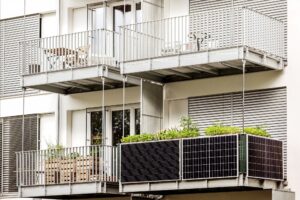Using cleaner-burning kiln reduces the health costs of air pollution from concrete production by 14%, according to a new study published today (March 24) in Nature Climate Change.
Concrete production is responsible for 8% of global greenhouse gas emissions, and as populations continue to grow, demand for concrete continues to rise. The production of concrete is also a major contributor to local air pollution.
The dust produced from mixing the concrete and the trucks that ferry the materials between building sites are responsible for the high levels of pollution caused by concrete production.
Researchers from the University of California have quantified the cost of air pollution from the production of concrete.
The researchers compared several strategies to reduce CO2 emissions to determine which are the most likely to also lower air pollution.
The researchers found that the most effective strategies to reduce pollution are using cleaner-burning kiln fuel, using more renewable energy and replacing a portion of the cement with a lower-carbon alternative.
Cleaner combustion shows the greatest co-benefits, with a 14% reduction in health costs.
The researchers have said while carbon capture and storage technologies could also reduce emissions by up to 28%, this could actually increase air pollution unless the technology itself is powered by clean energy.
Frances Moore, an assistant professor at the Department of Environmental Science and Policy said: ‘Air pollution and climate change problems are really intertwined when we talk about solutions.
‘This paper takes two problems and their joint nature and shows how different solutions have different effects on global climate change and local air pollution, which may matter a lot for policymakers.
‘As the cement and concrete industries make large efforts to reduce greenhouse gas emissions, it is critical that they remain mindful of the impacts decisions have on other environmental burdens to avoid undesired side effects.’
In related news, Norman Day, lecturer in architecture, practice and design, Swinburne University of Technology writes that with over
Photo Credit – Pixabay

















Trial pits are excavated either by hand adjacent to existing foundations or mechanically to provide an insight into the shallow ground conditions at a site. You can know details by visiting Concrete Crushing Wrexham
Over this article we come to know about the concrete production could cut air pollution. It provide us clear and insightful information regarding the topic. So, anyone searching for same topic may find their shelter over here. Thanks for this wonderful content .You must also check out Jagas.co.nz it has some great insights too.
One should make certain that the contractors you’re considering have insurance and that it’s adequate enough to cover your home and your project in the event of an accident.